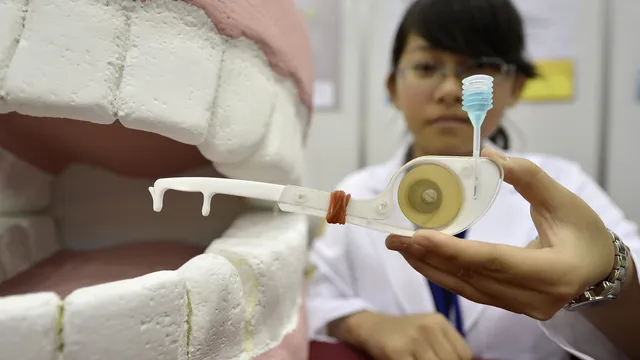A 20-year-old man in China had a cross tattooed on his neck. Five months later, the tattoo inexplicably disappeared and was replaced by an aggressive necrotic ulcer and severe inflammation. The case is so strange that doctors say it "broadens the spectrum of tattoo-related pathologies."
The man's doctors noted several things that were strange about his case. First, they found no signs of infection. The pigment used for the tattoo, which was red, disappeared from his skin, leaving only scars in places that had not yet been covered by the ulcer. This is not entirely unusual; in normal cases, when people have a bad reaction to a tattoo, the pigment is known to migrate to the lesions or lymph nodes. But in this case, there were no traces of the red ink, even upon closer examination.
When the body rejects tattoos, abnormal immune responses usually remain in the upper layers of the tissue and almost never cause tissue death. But the man's lesion (medical term for pathological changes in tissues – ed.) was deep and clearly invasive, crusted, bleeding necrotic ulcer. In addition, doctors noticed that his neck was swollen on both sides of the lesion. Magnetic resonance imaging (MRI) showed that large masses had formed on both sides of the ulcer and underneath it. The masses were approximately 4 cm by 3 cm in size and were obscuring his jugular veins. Subsequent advanced computed tomography scans showed that the internal jugular veins on both sides of his neck had formed clots.
The doctors used a fine needle to extract the contents of the formations to understand what was happening. But all they extracted were remnants of dead tissue and immune cells, which was not particularly helpful. Given the growths, blood clots, and spreading necrotic ulcer, the man was sent for surgery. The doctors surgically removed the ulcer and growths and closed the clotted veins. They then had to use tissue from the man's thigh to reconstruct his neck.
The final diagnosis was necrotizing granulomatous lymphadenitis. This means that as a result of the inflammation, groups of immune cells formed, his lymph nodes became inflamed and swollen, and there was also dead tissue. It is unclear exactly how all this happened, but doctors had several hypotheses.
The main theory is that the man had an unusual immune reaction to the tattoo—the red organic dyes and heavy metals contained in some tattoo inks have been linked to similar cases before. In one possible scenario, the unusual immune response led to the formation of clusters of immune cells, which caused swelling of the lymph nodes and pressure on the vascular system. This, in turn, slowed blood circulation in his neck, leading to cell death.
Another possibility is that chronic inflammation from the tattoo caused erosion of his vein walls, which also led to cell death. A biopsy showed necrosis in his jugular veins, which supports this hypothesis. It is also possible that the inflammatory response involved various abnormal immune reactions that caused a state of hypercoagulation, meaning that his blood formed clots more easily. The clots in his neck could also have led to the necrotic lesion.
Although doctors cannot say for sure what happened—or whether it was some kind of divine retribution—they claim that this case expands the possibilities for negative consequences from tattoos.
Meanwhile, the man has recovered from his ordeal after receiving comprehensive support. He was probably advised to avoid tattoos – and probably holy water. | BGNES

 Breaking news
Breaking news
 Europe
Europe
 Bulgaria
Bulgaria







